Words and Photography: Johnny McCormack
Wet, murky and still. The air was damp and salty as I made my way into the industrial back blocks of Christchurch airport to rendezvous with Roland Morley-Brown. After weeks of email tag, we’d finally formalised our road trip, which featured an apt vehicle for our extravaganza – a 4WD camper, capable of taking us anywhere at any time. Our plan was to circumnavigate the Southern Alps and ride as much empty backcountry as possible, without the hassles that come with pre-booking and coordinating accommodation. With no fixed itinerary and roving wheels, we were free to go where the wind blew and snow fell with the roads and mountains stretched out before us.

‘Camper’ is a somewhat misleading, inaccurate description. Essentially what we hired was a double cab ute with a tiny cabin bolted on the back with barely enough room to cook and with a little reconfiguration, enough room for two beds. It could be classified as a giant transportable fridge, or as we’d later find out, a freezing fiberglass condensation cavity. Equipped with a canvas pop-top – and as the rental guys wryly warned us, a leak when it rained – I was internally questioning what we’d signed up for. RMB and I would be cohabiting in very close quarters for the coming weeks. After trialling how to negotiate the extra wide girth of our new lodgings, we fired up the engine, picking up enough supplies to sustain us as we embarked on the quintessential winter roadie and disappeared off the grid.

It had been a good winter for the eastern flank of New Zealand, with several Southerly systems blasting the coast. This particular one was still creaking and groaning as we pointed towards the Southern Alps to begin our journey. There had been a dramatic shift in weather patterns from recent years switching from El Nino to La Nina, giving the East Coast a new found abundance of snow and sub-zero temperatures, while the Western hills remained barren. Rather than follow the masses out to Mt Hutt, with its mighty base and ultra-fast chairs, we headed slightly further inland to Mt Olympus, on an expedition to seek out untracked terrain.
The drive into Olympus is dramatic to say the least, as you’re greeted with monumental scree slides that tumble thousands of feet all the way to the valley floor. The surrounding tussock hills are coated with fresh snow and disappear into a thick layer of cloud. A shingle road winds up a narrow river valley, infested with potholes. A total sum of two cars both driving in the opposite direction passed us by as we start the climb towards [our destination for the evening], “the bottom hut”, which is a half way point up the mountain road before it turns into a perilous one-way goat track.
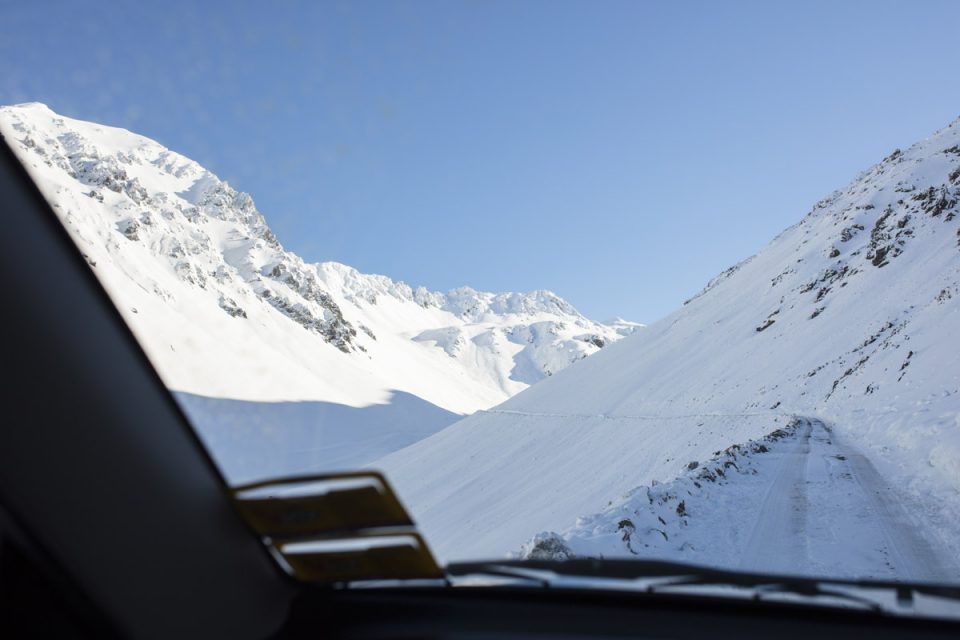
It was close to dark and somewhat airy as we arrived at the hut. A lone dirt-bike was parked outside, a hand pulled back the blinds and peeped out. The owner of said bike turned out to be a local shredder by the name of “Smithy”, joined his partner in crime, “Fanny”. They were staying just down the road, in a converted removal truck that looked more like an architecturally designed portable apartment. After a few hours in the camper [our respect was already high] for these hardy fellows living an off-the-grid dream, out here in the hills. We exchanged a few pleasantries and they boosted back down to their dwelling.
It felt a little like cheating spending the first night in the bottom hut, but it was freezing and a fireplace awaited us inside. The building is a sturdy brute with battle scars aplenty. Inscribed acronyms decorate the wood work and you can almost smell the hard life it’s lived. Shortly after cranking the fire, car headlights appeared outside and two American girls jumped out. They were planning on driving up to “the top hut”, divulging a hot tub, giant fireplace and full bar was awaiting. They used a trusty two-way radio, getting the all clear to head up. A couple of hours later the door burst open, with a cold draft swirling around the room and the girls following, looking rattled. The road had got the better of them, as they relayed how they narrowly escaped death, with their Subaru submerged under a giant snowdrift near the top.
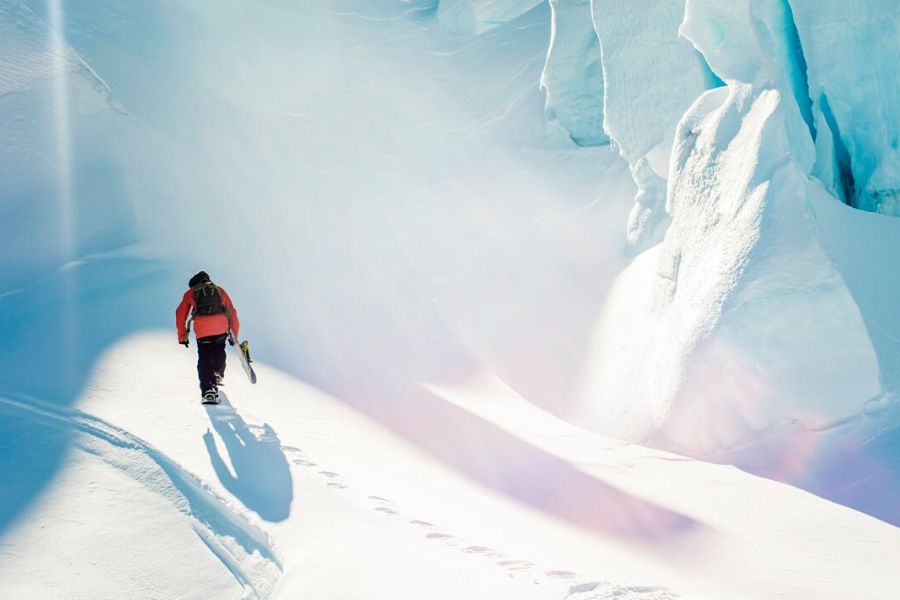
As dawn broke, the clouds parted and we were greeted with a sparkling white hinterland towering above us. Armed with truck size chains and chunky tread we were ready to test ourselves on the icy switch backs. Smithy and Fanny blazed past on their two-stroke bike, and we watched them enviously putt up the road, backcountry gear on and their boards sandwiched between them.
After we’d climbed most of the goat track with the last stretch in sight, we caught a glimpse of the girls’ car firmly implanted in the snow bank. The first couple of vehicles had somehow managed to shuffle around the Subie, testing the strength of the crumbly road edge. We grabbed our shovels and dug until we were able to wrestle the vehicle out and make our way up the home stretch.
Getting up any clubbie road on a powder day is cause for a mini celebration, however it was short lived, as the next stage was spent dealing with the formidable rope tows. After falling off a couple of times I slowly rediscovered the muscle memory to grab the rope, flick the cracker into a secure hold and hang on for dear life as the ancient mechanical beast propels you upwards. Once we’d negotiated the first two tows we headed over to the base lodge, a beautiful timber structure, typically humming with activity. A log burner crackled, a breath-taking view and a huddle of humans around the ticketing office (aka café/bar). Before we got too comfortable we headed back outdoors, traversing to the other side of the field where we spent the day hiking knee deep in powder.

We binged on an array of craggy rocks and heavily loaded wind sculpted bowls, whilst reconnecting with Smithy, Fanny and the girls. There is a unique, jovial camaraderie that comes with being in such a beautiful, remote landscape and a memorable session proceeded throughout the afternoon and again the following day, after which we decided to head back down the valley to look for some new topography. Rumour had it that Mt Dobson had been getting a good dosage of snow and RMB knew of some backcountry terrain there.
We camped near the access road and cruised up to the base with a relative ease the following morning. Dobson is a commercial field with a very low-key vibe – one chair, one T-bar and one poma lift – simple. The lifts are accompanied by a series of utilitarian portable buildings fit for purpose and equipped with an espresso machine, strategically placed in the communal shed with a sturdy fireplace and a pie warmer packed with local goodness – a welcome reprieve from our tiny quarters. We fueled up, headed to the top and began hiking out the back along a rollercoaster ridge line, until we found a fun bowl to shred. It could be likened to a mini heli zone, with tight chutes and spines that eventually opened up and proved to be a hidden gem, allowing for long, leisurely drawn out turns.
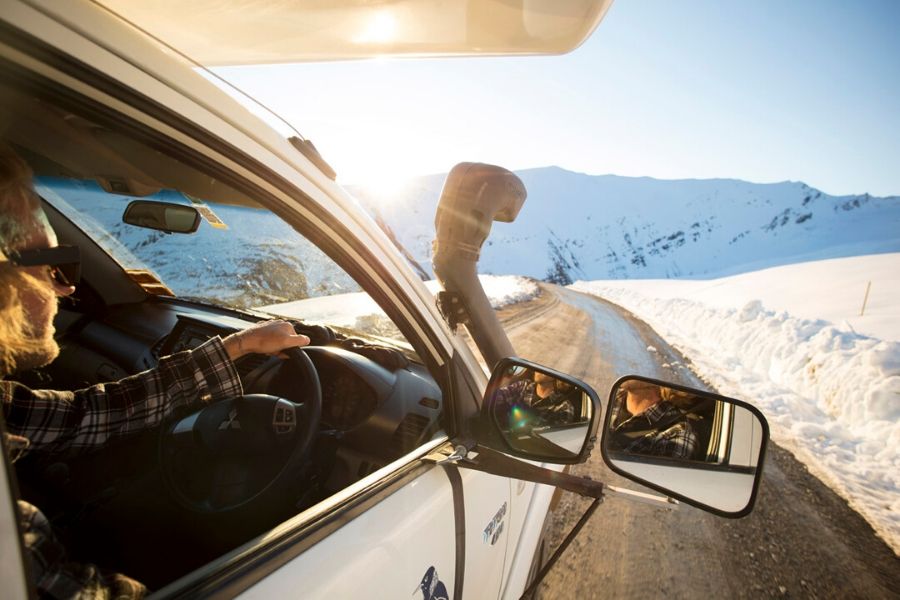
Dobson’s backcountry sits snugly at the beginning of the “Two Thumb Range”, well renowned for its steep peaks and burly terrain, an endless potential as bowl after bowl and peak after peak recede into the far distance. We spent the next two days exploring and riding every feature we encountered, until a wet and miserable nor West front [began to] roll in. Exhausted but completely fulfilled we elected to head North, hoping to sample the fruits at the top of the Alps. The next stop was Muria Springs in Lewis Pass, a thermal hot spring with piping hot outdoor rock pools, a freezing plunge pool and a steaming sauna, all within a natural Japanese onsen setting.
With nearly a week since our last shower, it was bliss to be submerged in therapeutic minerals, while the sweat that had escaped our pores from hiking the days prior was washed away.
Surrendering to the Elements
The forecast had taken a considerable turn for the worse, with a huge weather bomb tracking West. Rather than try and dodge the bullet, we decided to embrace the front and drove right into the eye of the storm – spending the night settled on a spindly rock formation on the rugged West Coast. With high seas thundering around us and torrential rain bouncing off the roof, we attempted to sleep.
Our hopes of riding the Northern ski fields disintegrated as we watched the snow wash away before our eyes, so we decided to cut’n’run South. With the violent storm hot on our heels and downpours crashing onto us, we veered off the coast and headed back through the center of the Southern Alps via Arthur’s Pass. It felt like driving through the center of the earth, water charging down from every rock and cliff face, the wet air filled with a chlorophyll haze that swirled upwards as we climbed our way over the Alps. Once we were back on the Eastern side the skies started to clear. It was still dark and ominous, but it was no longer a relentless deluge. We spent the next couple of days canvassing Department of Conservation (DOC) camp sites, driving up unfamiliar roads to discover new locations.
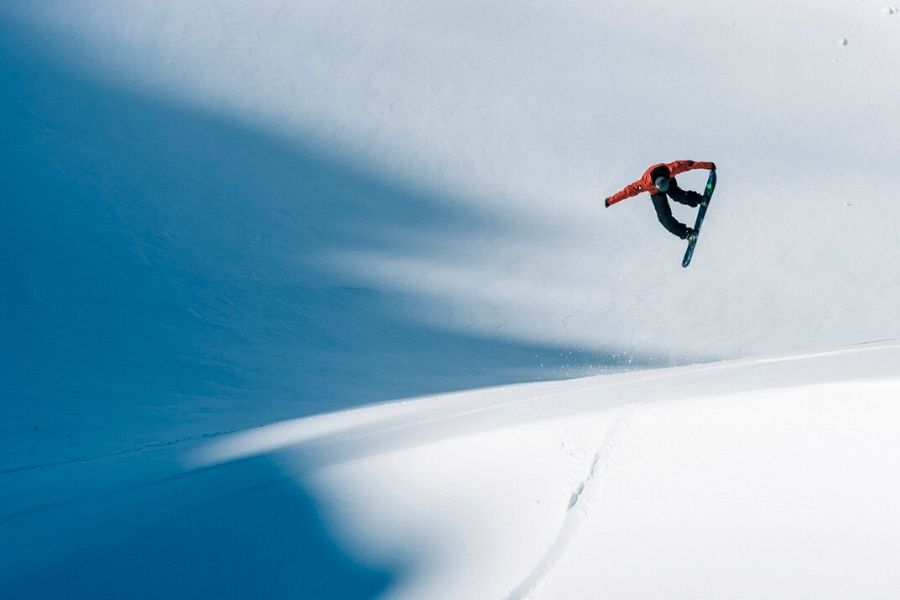
Clocking up the kilometers, we got used to our mobile chilly bin. Relearning how to navigate slowed down time, with no urgency to “check in”, we were free to meander through the mountains, studying the map and contemplating our next trajectory. This new-found freedom was compelling, with the ability to instantly pack up and hit the gas. Down jackets, efficient layering systems, nourishing rations, with a sprinkle of grit determination was all that was required to survive roaming off the grid.
The cabin offered minimal creature comforts, no drying room or heater after a day’s riding, no running hot water and no flushing toilet. There was no way to maintain body temperature aside from star jumps or retreating to our sleeping bags. The drive up and down the mountain was crucial in utilising every second of heater time, drying wet boots and gloves, we quickly become accustomed to the distinct interior aroma. We found sleeping with the canvas vents open at night was crucial. Even though the cabin would be filled with a howling wind, it was infinitely better than allowing it to turn into a wet cavity that would [eventually] freeze into mini icicles. Free from modern luxuries, we were frequently perched at foothills, waiting to re-enter the alpine wilderness.
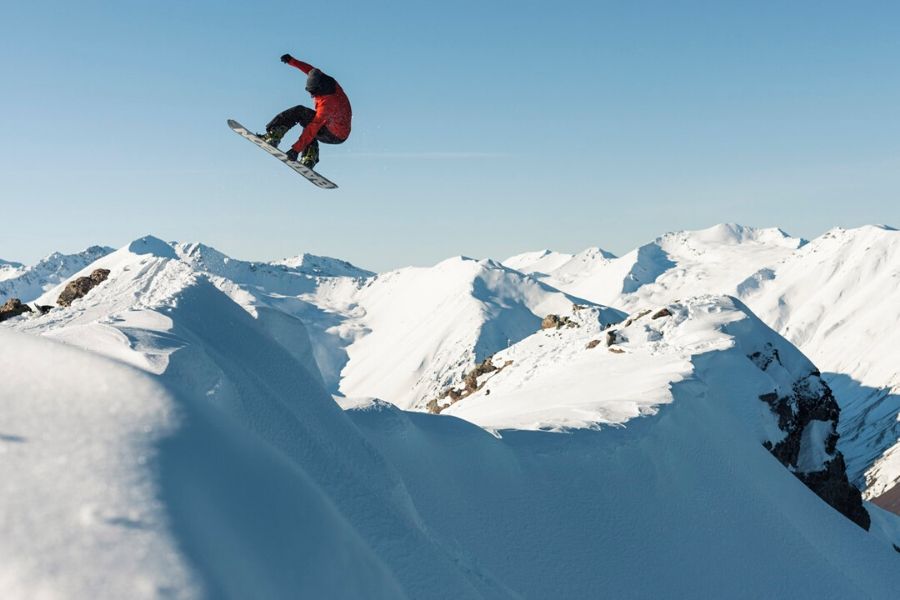
Take Two
Maria Kuzma (RMB’s partner) was due to land at Queenstown international airport to join us for our final leg. As we made our way into the tourist mecca to pick her up, we were greeted by a stark contrast to the wilds and new found feraldom we’d become accustomed to. Another Eastbound cold front was about to pile into the ranges, so we boomeranged back, making a swift return to ‘hike and ride’.
Maria’s enthusiasm was a welcomed reboot for our weary bodies, as we spent the next few days riding around the Canterbury backcountry. For the last week (when reception allowed) we’d been in cahoots with Southern Alps Guiding, attempting to line up an opportunity to get to the upper reaches of the Tasman Glacier at Aoraki/Mt Cook, conditions pending.
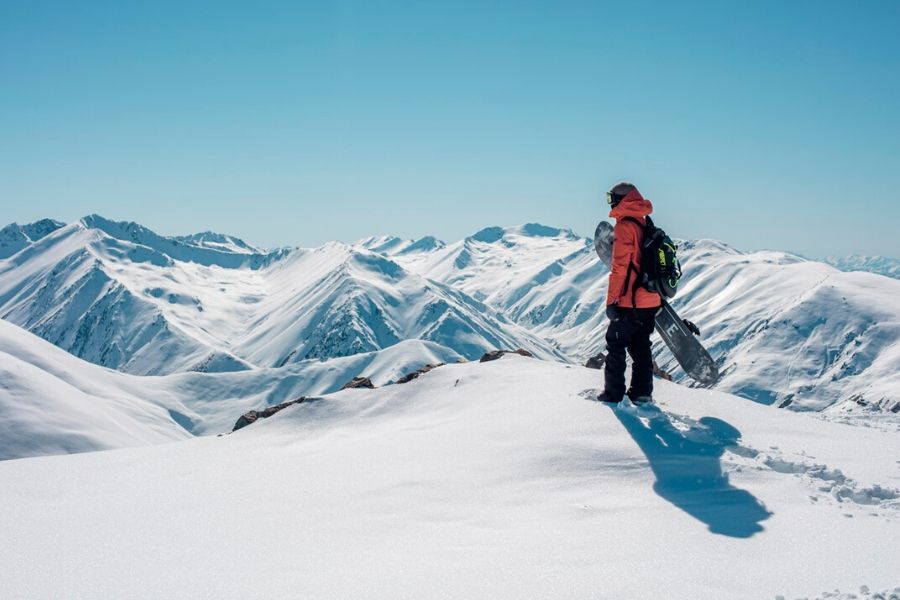
A favourable weather window was forecasted and a green light was actioned. Tucked up, toasty and asleep at the base village of Mt Cook, we were however, completely unaware of the plummeting temperatures outside. Peeking out the window at dawn revealed an amazing pink hue, high up on a towering mountain face. We watched as it inched its way down, reluctantly giving up our sleeping bags with near frostbitten fingers we prepared for a considerable hike in the polar wilderness.
As we travelled up the valley, we were surrounded by intimidating, gigantic peaks, scale taking on a whole new meaning. Glaciers fan off in every direction, couloirs hemmed in by sheer ice cliffs. Avalanche paths ran all the way down to the valley floor, colliding into ancient moraine walls. We were dropped off near a giant ice fall where we tip-toed around, steering clear of the crevasses and walking warily under leaning seracs – huge columns of ice that inch their way down the valley at a micro pace. RMB began chipping into the ice, forming a cut out, throwing down an array of tricks, landing in a pocket tranny and narrowly avoiding the hungry cavity below.
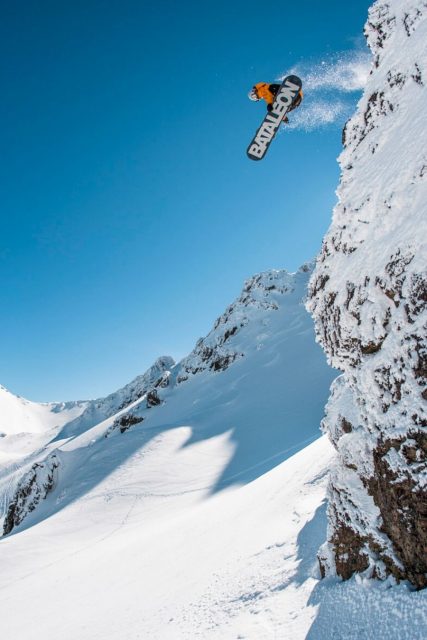
Being surrounded by colossal ice sheets bouncing the sun’s harsh rays created a heightened intensity of illumination. Running water could be heard all around us, as water dripped down the skyscraper faces that enveloped us. Across the valley, a chunk of ice the size of a three-bedroom home gave way and obliterated itself as it tumbled over the cliff and landed on the glacier below, a deep earthy rumble following suit. Meanwhile, RMB hit a leaning tower of serac, shaped like an adze and looking suspiciously unstable and Maria eyed up a powder landing below a frozen turret.
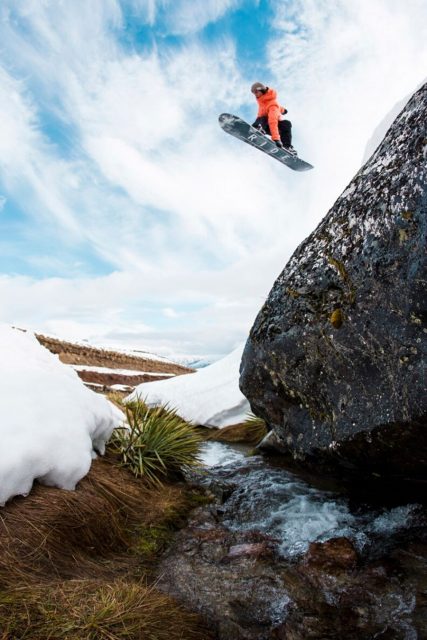
A couple more cut outs later in the frigid, foreign lunarscape and it was time to call in the chopper. The sun dropped out of the rich blue sky and a long ride down the glacier stretched out before us. We watched our guide turn into a micro dot down the Arctic valley as we reluctantly packed our bags and proceed to follow him back towards civilization. Our trip was coming to a close. We’d spent the past few weeks soaking up everything Mother Nature could throw at us and sadly, it was time to get back on the grid. Dry, warm and surrounded by sweet, fresh air as we slept. It was a small comfort, after all.

